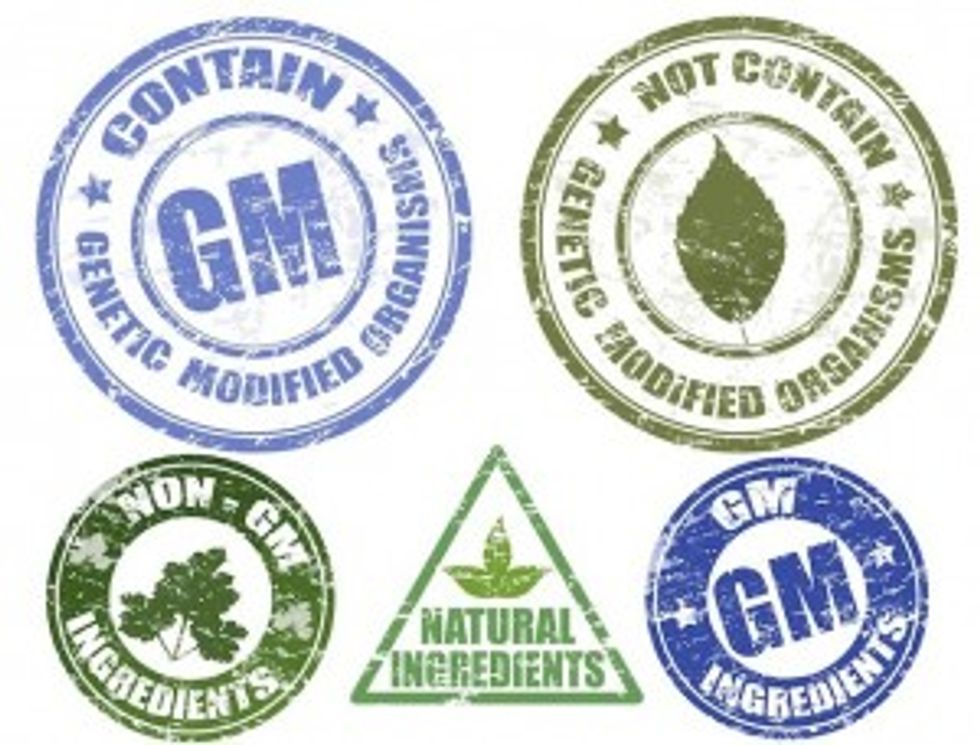Here are some of the most common GMO myths debunked.
Whether you are shopping for your groceries at Target or Sprouts, you have probably noticed the “Non-GMO” label on many of the food products. GMO stands for Genetically Modified Organism. An intense, and in some cases panicked, interest in GM foods and products has surfaced in the past few years, causing many to worry for their health and safety. Many people have come to believe that this is a radical new technology that carries a number of health risks and that there should be an array of new legislation passed to limit the utilization of GM technology. The problem is, genetic modification isn’t a new practice. In fact, the specific type of genetic modification in question, genetic engineering, has been used effectively and safely for over 30 years.
The general idea of genetic modification has been practiced for thousands of years. Selective breeding, also known as artificial selection, was the first form of genetic modification. This occurs when a farmer or livestock breeder selects plants or animals with desirable traits and encourages them to breed. It is important to note that although this form of genetic modification has been the primary form used in the past, it has since been replaced by a much more accurate genetic engineering process. In 1972, Paul Berg was successful in creating the first recombinant molecules, meaning that genetic material from multiple sources was combined to form a new, functioning sequence of DNA. Although many GMO opponents like to use scare tactics to convince consumers that these products are innately dangerous, there are many claims made about GMOs that just don’t stand up to the evidence.
GMO Products are Randomly Assembled Creations. A common image projected upon GMO products is that of Frankenstein’s monster, that parts have been pulled from various sources, haphazardly strung together, and shipped right to the stores. In actuality, genetic engineering is a precise and well-disciplined practice that follows a strict set of guidelines from the FDA. Genetic engineering involves the direct manipulation of an organisms DNA. The genetic material of interest is isolated, copied, and then inserted into a host organism via bacterial transportation or direct implantation with an instrument. This DNA is selected and spliced only after a rigorous experimentation process. This process includes identifying which genetic material is responsible for the desired trait, determining where the material should be placed in the hosts DNA, confirming that this splice produces the desired trait in the host, and finally, making sure that this change is safe for consumers.
GMO Products Cause Cancers and Allergies. There is no doubt that such a complicated process should be practiced with diligence failing to place genetic material in intended place or failing to test for additional traits that may be expressed when selecting for the desired trait could cause health concerns. To prevent these issues, companies and laboratories that perform this process consult with the FDA and conduct extensive testing to ensure that their product does not resemble known allergens and toxins. In regards to cancer, a recent study published in Food and Toxicology by toxicologists at the University of Caen in France investigated the possible adverse health effects caused by consumption of GM corn. Specifically, a strain of corn patented by the biotec company Monsanto. The authors claimed that rats that were fed the GM corn were more likely to cancers, primarily cancerous tumors, and died earlier than the control group of rats. Although Monsanto’s supposed evil practices are the soapbox for anti-GMO advocates, this study was retracted because it did not show a significant correlation between the consumption of Monsanto’s GM corn and the development of cancer. The researchers were also unable to provide a mechanism in which the GM corn might cause cancerous growth.
GMO Products harm the Environment. Many GM crops have reduced the need to use harmful pesticides by making crops innately resistant to insects. These crops are able to better utilize sunlight and water, which saves resources including the amount of land required to grow and improves crop yields for farmers.
There are certain risks that must be accounted for when genetically engineering foods and animals, but it seems that every person who has shopped at Whole Foods today claims to be an expert on GM foods. Despite the sensationalist rhetoric of anti-GMO advocates, the science states that GM foods are perfectly safe for human consumption when properly monitored. It is important to consider the credibility of sources when doing personal research; websites that appear to have biased URLs or article titles likely are just that. When reading articles, each assertion that the author makes should be supported by a citation or reference to peer-reviewed research. Personal experience and anecdotes are not sufficient evidence to confirm the legitimacy of a claim.




 Going to the cinema alone is good for your mental health, says science
Going to the cinema alone is good for your mental health, says science












 women in street dancing
Photo by
women in street dancing
Photo by  man and woman standing in front of louver door
Photo by
man and woman standing in front of louver door
Photo by  man in black t-shirt holding coca cola bottle
Photo by
man in black t-shirt holding coca cola bottle
Photo by  red and white coca cola signage
Photo by
red and white coca cola signage
Photo by  man holding luggage photo
Photo by
man holding luggage photo
Photo by  topless boy in blue denim jeans riding red bicycle during daytime
Photo by
topless boy in blue denim jeans riding red bicycle during daytime
Photo by  trust spelled with wooden letter blocks on a table
Photo by
trust spelled with wooden letter blocks on a table
Photo by  Everyone is Welcome signage
Photo by
Everyone is Welcome signage
Photo by  man with cap and background with red and pink wall l
Photo by
man with cap and background with red and pink wall l
Photo by  difficult roads lead to beautiful destinations desk decor
Photo by
difficult roads lead to beautiful destinations desk decor
Photo by  photography of woman pointing her finger near an man
Photo by
photography of woman pointing her finger near an man
Photo by  closeup photography of woman smiling
Photo by
closeup photography of woman smiling
Photo by  a man doing a trick on a skateboard
Photo by
a man doing a trick on a skateboard
Photo by  two men
two men  running man on bridge
Photo by
running man on bridge
Photo by  orange white and black bag
Photo by
orange white and black bag
Photo by  girl sitting on gray rocks
Photo by
girl sitting on gray rocks
Photo by  assorted-color painted wall with painting materials
Photo by
assorted-color painted wall with painting materials
Photo by  three women sitting on brown wooden bench
Photo by
three women sitting on brown wooden bench
Photo by 
 Photo by
Photo by  Photo by
Photo by  Photo by
Photo by  Photo by
Photo by 


 people sitting on chair in front of computer
people sitting on chair in front of computer



 all stars lol GIF by Lifetime
all stars lol GIF by Lifetime two women talking while looking at laptop computerPhoto by
two women talking while looking at laptop computerPhoto by  shallow focus photography of two boys doing wacky facesPhoto by
shallow focus photography of two boys doing wacky facesPhoto by  happy birthday balloons with happy birthday textPhoto by
happy birthday balloons with happy birthday textPhoto by  itty-bitty living space." | The Genie shows Aladdin how… | Flickr
itty-bitty living space." | The Genie shows Aladdin how… | Flickr shallow focus photography of dog and catPhoto by
shallow focus photography of dog and catPhoto by  yellow Volkswagen van on roadPhoto by
yellow Volkswagen van on roadPhoto by  orange i have a crush on you neon light signagePhoto by
orange i have a crush on you neon light signagePhoto by  5 Tattoos Artist That Will Make You Want A Tattoo
5 Tattoos Artist That Will Make You Want A Tattoo woman biting pencil while sitting on chair in front of computer during daytimePhoto by
woman biting pencil while sitting on chair in front of computer during daytimePhoto by  a scrabbled wooden block spelling the word prizePhoto by
a scrabbled wooden block spelling the word prizePhoto by 








